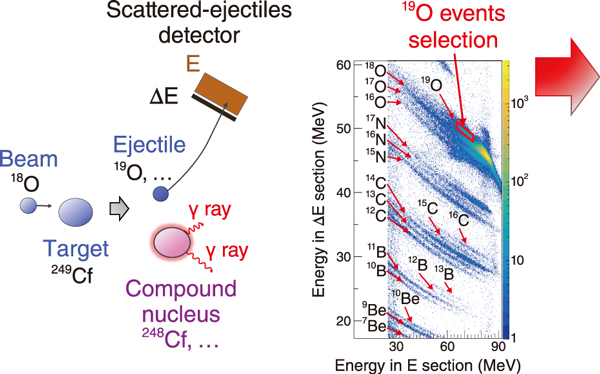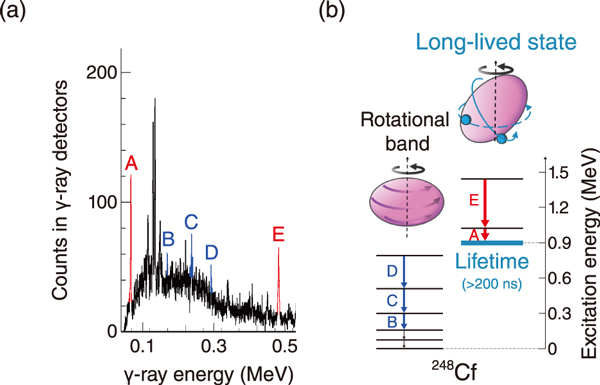
Fig.1 Multinucleon transfer reactions and identification of generated nuclei

Fig.2 (a) γ-ray spectrum and (b) energy levels of 248Cf
Numerous actinides are generated by nuclear transmutation technology that aims to reduce the volume of long-lived minor actinides produced in nuclear reactors and in next-generation reactors that use minor actinides as fuel. To establish these technologies, it is important to know the structure of the atomic nuclei of these actinides. In this research, we developed a technique for the simultaneous investigation of the structure of several actinide nuclei, which have not been measured as yet.
To study various actinides simultaneously, we focused on multinucleon transfer reactions (Fig.1). When a target is irradiated with a heavy-ion beam, the colliding nuclei exchange neutrons and protons in various patterns, resulting in the production of many nuclei in the neighborhood of the target nucleus. To study the structures of these nuclei, we must determine the excited compound nucleus generated in each reaction event. Using our technique, we identify the heavy actinide produced by detecting and identifying the light-scattered ejectiles generated simultaneously. For detecting these ejectiles, we developed a ΔE-E detector array. As shown in Fig.1, different light particles can be discriminated by measuring the energy loss in the (thin) ΔE and (thick) E section separately. Heavy compound nuclei are normally produced in an excited state, and they lose excitation by emitting γ rays. The energy levels of each nucleus, i.e., its structure, can be determined by measuring these γ rays. The nuclear energy levels are reflected in the motion of individual protons and neutrons or arise from collective behaviors such as the rotation of the whole nucleus. The γ rays were detected using four Ge detectors.
In the experiment, the structure of californium-248 (248Cf, atomic number 98) was investigated by irradiating a 249Cf target with an oxygen-18 (18O) beam. The energy levels shown in the partial level scheme in Fig.2(b) were obtained in this work. Among the different excited states, at an excitation energy of ~0.9 MeV, we discovered an excited state with a long lifetime, more than 200 ns. Although this lifetime is short, it is at least 200,000 times that of the typical excited states. This excited state is so long lived because the direction of the orbital motion of the two outer nucleons (i.e., protons or neutrons) differs from that of the other nucleons and shifts the orientation of the rotational axis of the nucleus. The change in orientation, in turn, hinders the decay from this excited state to lower states in the rotational band, leading to the long lifetime. In addition, we observed the energy levels corresponding to collective rotational states. The degree of deformation of the nucleus can be deduced from these energy levels.
As shown in Fig.1, several nuclei were generated in the same experiment, and data analysis is still ongoing. In future, using heavier and more energetic beams, it may be possible to study superheavy elements. Measurement of superheavy elements is difficult because of their short lifetimes. However, by producing these elements in their low-energy, long-lived excited states (some of which have been predicted to be even longer-lived than the corresponding ground state), they can be detected easily.
(Riccardo Orlandi)